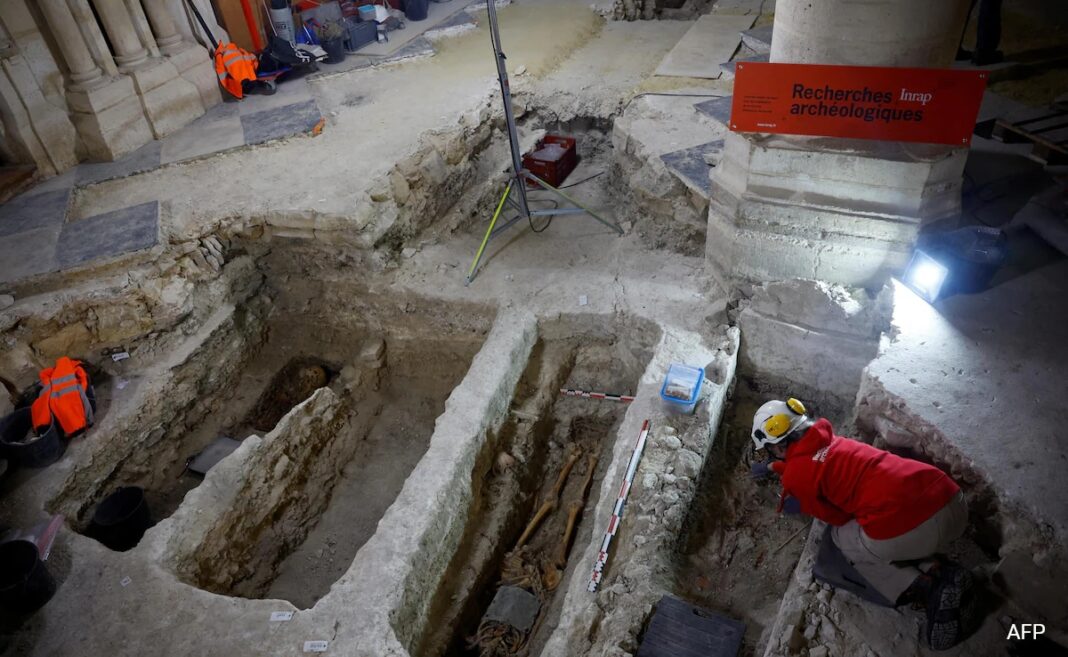[
]

Joachim De Bellay, a member of a literary group known as La Pleiade, died aged 37 in 1560.
A centuries-old mystery surrounding a poet buried in Notre Dame in Paris could be close to being solved thanks to archeological digs at the world-famous cathedral, researchers said on Tuesday.
The exact whereabouts of the tomb of Joachim de Bellay, a French Renaissance poet, has puzzled researchers for many years.
De Bellay, a member of a literary group known as La Pleiade, died aged 37 in 1560.
His family asked for him to be buried in Notre Dame’s Saint-Crepin chapel. But when the site was renovated in 1758, no trace of his remains could be found.
His remains’ precise location was shrouded in mystery until 2022 when archeologists, sifting through the site in the aftermath of the 2019 fire that destroyed much of Notre Dame, found two tombs at the cathedral’s crossing.
The scientists, working for the national institute for preventative archeology, rapidly identified one of them as that of Antoine de La Porte, a cleric who died in the early 1700s.
But they could not immediately figure out who was buried in the other one.
Using modern methods of analysis, the researchers began to find clues as to his possibly identity. All pointed to de Bellay.
A deformation of his iliac bone told them that he did a lot of horse-riding.
De Bellay “was a skilled rider, he went from Paris to Rome on horseback”, Eric Cubrezy, a doctor and archeologist, told reporters.
In addition, an incision made by a saw in the corpse’s skull, as well as a broken sternum, suggested the body had undergone an autopsy before being embalmed — just like de Bellay.
The final, and most telling, clue wase traces of a rare illness, a bone tubercoulosis leading to chronic meningitis, consistent with the poet’s medical history.
French daily Le Monde, describing the mystery around the missing corpse as “a cold case”, said the latest find was the “most spectacular result” of the Notre Dame digs launched after the 2019 catastrophic fire.
The archeologists themselves preferred to remain cautious.
“There are still some doubts,” said Christophe Besnier, one of the scientists in charge of the excavation site.
(Except for the headline, this story has not been edited by NDTV staff and is published from a syndicated feed.)


